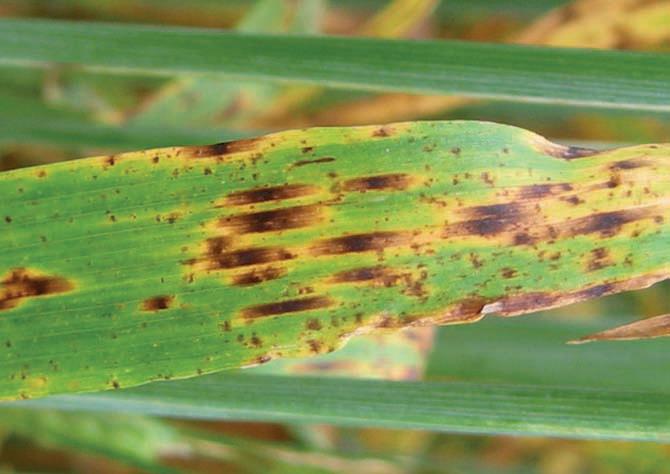Crop health update: Where now with ramularia?
9 April 2019An economic analysis of ramularia shows it strips £10 million off the £10 billion UK barley market each year but the tools to tackle the problem are diminishing. Historically, varieties have been weak for the disease and we have had to rely on fungicides but ramularia has developed resistance to all the systemic fungicide groups, leaving only chlorothalonil as an effective fungicide. The disease is hard even for experienced trials operators to diagnose accurately and this has led to the suspension of the varietial ratings for ramularia on AHDB recommended lists because of inconsistencies between trial sites while they recalibrate the system. Stronger varieties and breeding will be part of the solution in future but that’s a longer game and will not be a tool for 2019.
Judging which crops are at risk has also proved tricky. There is a correlation between leaf wetness during the season and the severity of disease symptoms that develop but this doesn’t hold true in all crops and in all seasons so a risk prediction tool to guide growers is still a work in progress. There is a strong link with crop stress and in many cases it is the stress of flowering or plant signals triggering senescence that set off the damaging spot form of pathogen, which until that point has been hidden within the plant.
So what is the best advice for 2019? Firstly anything that will reduces stress to the crop should reduce the risk – many stresses such as flooding or bursts of temperature and sunshine are out with our control but things like nutrients stress or stress from other disease can be managed. Well planned input strategies are therefore useful. Building awareness of risk in individual fields is also helpful to begin to build a picture of on-farm losses and inform future strategies so walk crops and watch for symptoms. SRUC helped AHDB prepare factsheets to help with identification and assessment which are available on the AHDB website.
Leaf wetness may not be the whole story but it is one risk factor so if we get a lot of rain, dews or humidity in crops then that ups the risk. For 2019 having chlorothalonil in at the booting spray (T2 timing) is absolutely key. Other fungicides in the programme at that timing might be needed to reduce the stress caused by other diseases but will not help to managed ramularia as such. Having chlorothalonil in at the stem extension timing (T1 timing) is more optional as the link between ramularia control that early and the level later is fairly weak. Ramularia is present in the plant right from the seed stage and it is more about how it expresses itself on leaves one and two at end of the season rather than how to reduce it in the lower leaves at the T1 timing. What gets into the upper leaves is driven heavily by the environment and how this is then expressed as spots is in turn driven by the late season stresses.
Fiona Burnett for the Farm Advisory Service
Sign up to the FAS newsletter
Receive updates on news, events and publications from Scotland’s Farm Advisory Service

